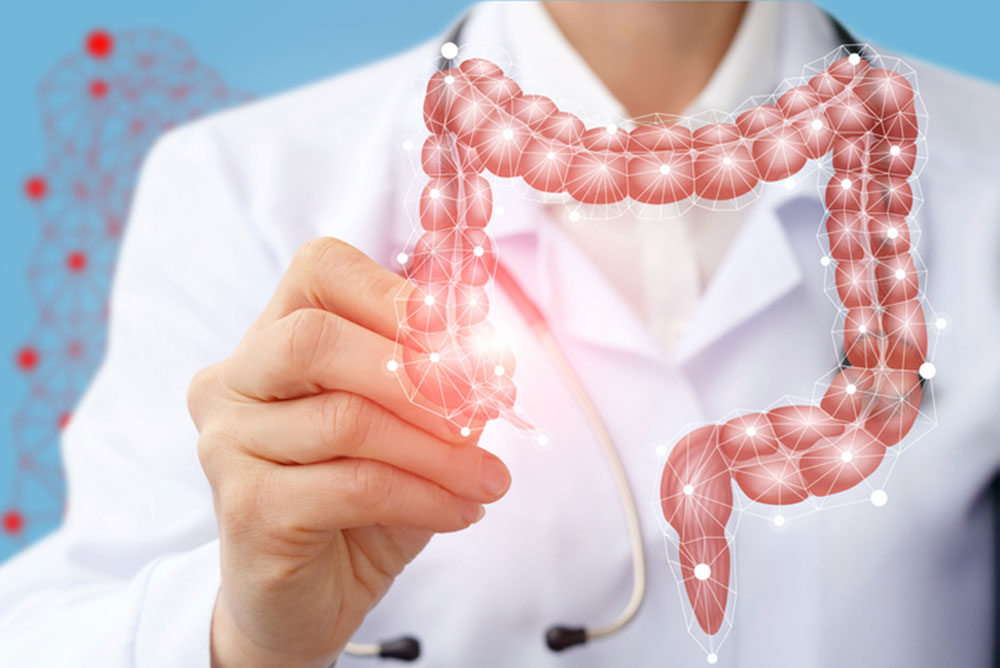
iStock
“THE GUT is now recognized as its own organ,” announced a young woman loudly to her pew as a recent local funeral was about to begin. (She whispered further explanation only to her seatmates.)
“Gut” has traditionally referred to all organs of the digestive tract, itself an “organ system” that includes “solid” organs” —liver, pancreas and gallbladder —as well as the GI tract. Alternatively, “gut” sometimes refers to just the GI tract, which is a series of hollow organs extending from the mouth to the anus and includes the esophagus, stomach, large and small intestines, colon and rectum. (Spread out, the entire GI tract is about the size of a tennis court.)
And these days, the “gut,” which often refers to the gut microbiome (the healthy bacteria living in the digestive tract that digests food) plays a role in the body’s immunity—which is especially important in the recent outbreak of E.coli infections—and has indirect effects on weight gain, fatigue, anxiety, depression and inflammation.
Most E. coli living in the gut qualifies as “good” bacteria and blocks colonization of pathogenic strains of microorganisms, including E.coli strains like the 0157:H7, involved in infections traced to romaine lettuce and meat products.
Diarrhea and stomach cramping are caused by the virulent Shiga toxin produced by this E.coli strain. More worrisome are kidney complications that can lead to long-term damage and failure, signaled by severe dehydration, a fast heart rate, pale skin and lightheadedness.
Why some people develop more severe, sometimes life-threatening symptoms can depend on which healthy microorganisms—specifically which strains of harmless E.coli —currently populating those individuals’ guts have the potential to increase or decrease how much toxin is produced by pathogenic E.coli. Assessing these organisms might someday help predict which individuals will become the sickest.
Women and girls make up about two-thirds of those affected in both recent E.Coli outbreaks linked to romaine lettuce this Thanksgiving and in late 2017. One explanation, according to a study of nearly 15,000 men and women, is that women eat more lettuce and other vegetables. Other possibilities: women report illness more often; and women’s microbiomes are more susceptible to this infection, whereas men have higher infection rates in E.coli outbreaks traced to meat products.
Because gut microbes have an average lifespan of about 20 minutes, the entire population of a person’s microbiome can be altered quickly by what they consume, along with the entirety of these microbes’ genes. Because of continuous regeneration, the gut lining is entirely replaced every two to three weeks—and a healthier diet can make for a healthier gut in anywhere from two to twelve weeks.
“Our diet programs our microbiome, and its genes,” writes New York internist Raphael Kellman, author of “The Microbiome Diet.” How the gut works also counters the assertion by Paleo diet enthusiasts that human genetic inheritance makes it impossible for our guts to digest grain. “Not only is that bad genetics, it’s bad nutrition,” according to Kellman.
In a 2011 study at Harvard and Duke University, over a 24-hour period, one group of volunteers ate a high-protein (meat, eggs, cheese) diet, while the other consumed a diet high in fiber (fruits, vegetables, grains). Bacterial analysis before, during and after that period showed that the microbiome responded quickly in both groups by increasing those bacteria that could metabolize their diet—even for the long-term vegetarian who agreed to eat meat for the study.
The gut microbiome benefits from specific diet components. Probiotics (food containing bacteria such as yogurt and kimchi) “help to maintain healthy levels of “good bacteria…support immune defenses…help break down foods we might otherwise find difficult to digest,” according to University of Newcastle molecular nutritionist Emma Beckett.
And “prebiotic” food —largely unaffected by digestion, including legumes, oats and beans —feed the good bacteria. (As for dietary supplements that purport to supply pre- or probiotics, nutritionists say these are unable to maintain a beneficial variety of bacteria.)
In yet one more definition, the “gut” refers to the mesentery, a “mighty membrane that twists and turns through the gut, first identified as a single structure by Leonardo da Vinci. For now, the mesentery, which connects the small and large intestines to the abdominal wall, is considered part of several organ systems: intestinal, vascular, endocrine, cardiovascular and immunological. Classifying it as an organ—meaning a group of tissues adapted to perform specific functions—is still in the proposal stage from surgeon Calvin Coffee at the University of Limerick.
Finally, there is the “gut feeling”—butterflies, queasiness—leading to the view of the gut as a “communication center for the brain,” according to NYU clinical medicine professor Lisa Ganjhu, who refers to the “brain as part of the gastrointestinal system.”
The gut and the brain communicate about mood, state of mind and stress level. Stress can cause chronic nausea or bloating, says Ganjhu. And, of course, about digestive matters: “first the gut provides information to the brain, while the brain helps us decide what, when, how much and how fast to eat and drink,” Ganjhu explains.
As we pay more attention to the gut, whatever the definition, it is increasingly clear that it requires attention to emotional well-being as well as careful feeding.
—Mary Carpenter
Every Tuesday in this space, well-being editor Mary Carpenter reports on health news that affects our everyday lives.

So encouraging to know that changes in diet can be beneficial in a relatively short time. Thanks for this interesting piece.